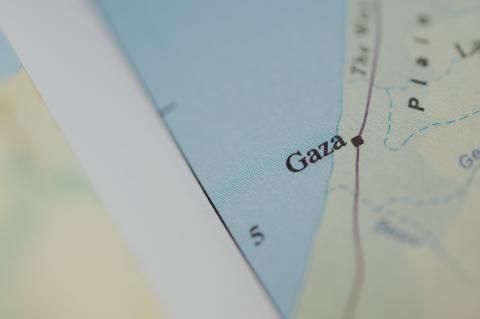Sryian President Bashar al-Assad claimed in September 2016 that he intends to re-establish control over the whole of Syria, and recent actions indicate this remains his strategic aim.
In the west of Syria, realising he did not have sufficient combat power to defeat the armed opposition militarily, Assad and his allies have instead adopted a twin approach of 'containing and negotiating' with the rebels. The fall of Aleppo to Assad’s forces may not have been strategically significant in and of itself, but it was a major psychological blow, and the regime used it to good effect by portraying the societal benefits of a ‘return to normalcy’ after years of conflict and ‘persuading' rebel groups to undertake a negotiated settlement (such as Waer in Homs and Wadi Barada near Damascus).
These settlements have the additional benefit to the regime of concentrating many of Assad’s opponents into the one area. Thus a mixed group of secularists, 'light' Islamists (less violent, domestically focused) and 'heavy' Islamists (more violent transnational groups such as al Qaeda and affiliates) is created, causing tensions to flare internally and allowing Assad to portray them all as being part of a broader terrorist threat.
Furthermore, negotiated settlements have allowed Assad to free some of his manoeuvre forces to head east (and to a lesser degree south). There are plenty of indications that he has indeed commenced this redeployment along multiple axes, as explained in this Aaron Lund piece. This Russian military briefing claims (from 15:20-15:50) Syrian forces have advanced to the the Syria-Iraq border south of Abu-Kemal. Syrian state TV also released pictures of what it claimed were Syrian troops at the border.
The south-eastern part of the border, however, has become somewhat problematic. A small number of US and coalition special forces troops have been operating in the vicinity of al-Tanf border crossing within Syrian territory. And, while they had enjoyed a degree of independence since they seized the border crossing from ISIS more than a year ago, they did come to the attention of Russian aircraft last year and to ISIS attention through a local counter-attack earlier this year. Now, as Damascus’ focus has shifted east, provocations in the form of land and air incursions into the area have commenced. On 18 May a convoy of pro-Assad forces was warned and then fired upon by coalition aircraft. Last week another small pro-Syrian force north of al-Tanf was engaged, and an Iranian-manufactured drone was shot down after firing on anti-Assad forces in the same area. In the last few days the US has deployed the HIMARS artillery rocket system into al-Tanf.
Some have claimed that eastern Syria is now up for grabs between US-backed and pro-Assad forces, with a possible post-Raqqa move for anti-Assad forces to take over the Euphrates River valley, including the strategically important Deir az-Zour. Another view is that the US is dedicated to stopping the establishment of a mythical ‘Iranian highway’.
But neither of these claims is based on reality. To begin with, the US and the rebel forces it supports in the southeast are small and lack armoured manoeuvre capability. Assad regime forces are now located to their north and look set to increase their number. The Syrian military has maintained a brigade under siege in Deir az-Zour, and it is difficult to see any way the US could actively support forces that would essentially be used to relieve the siege of Syrian military forces in that city. Equally important, Washington's point man on ISIS, Brett McGurk, was quoted in a 7 June press conference in Baghdad referring to the US ground force presence in Syria as saying: 'the mission is to fight Daesh. When the fight against Daesh is over, we won’t be there.'
As for the argument that Iran seeks a land bridge to the Mediterranean, nobody has yet explained why Tehran would want a vulnerable 1000km stretch of road passing through four countries in order to transport arms to its ally Hizbollah in Lebanon, a force it already supplies effectively through its Damascus airbridge. Perhaps the Assad regime’s desire to seize crossing points to Iraq has more to do with restoring international commerce and gaining the revenue such crossings produce, much as US-backed rebels controlling the Tanf crossing have started to do.
The manoeuvring between pro-Assad forces and US-backed groups in the east is interesting to watch, but observers should be wary of drawing too many conclusions about the ability and willingness of the US to influence long-term events there. The US presence is tactical and temporary, a fact fully appreciated by those who are there for the long term.

